Regardless of where you are in the world, your mental image of the world is likely to be similar to everyone else’s (unless your high school geography curriculum was drastically different). Of course, we know a lot more about our immediate surroundings than we do about other areas, such as our own country, its neighboring states, and so on, even though our general perceptions of the globe are comparable.
As it turns out, there are several flaws in that perception that we seldom try to fix, primarily because they have no direct impact on us. Inaccuracies such as:
8. Brazil is larger than the entire United States.
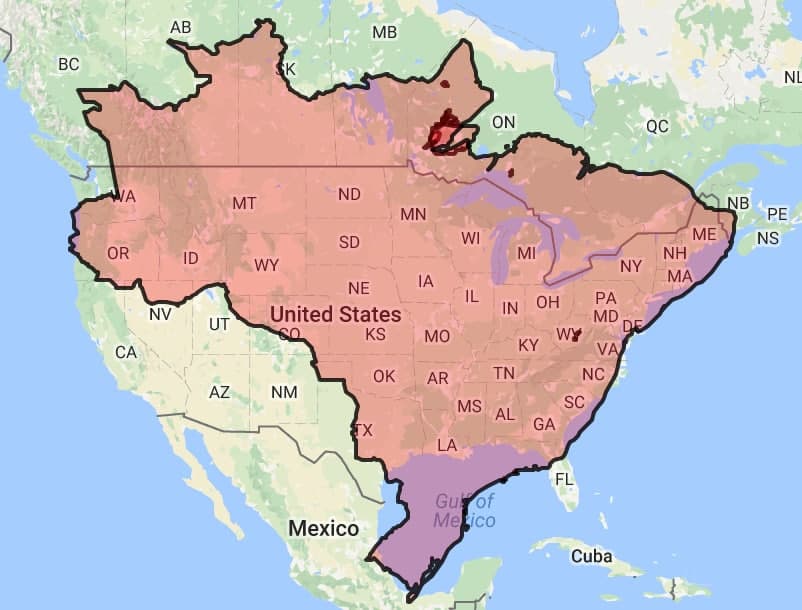
The United States is a relatively large country by international standards; Anyone who has driven from one coast to the other in the United States knows that it has to be one of the largest countries in the world. Brazil, on the other hand, appears to be no larger than any of its neighbors, let alone the United States. Take a peek at the map.
In truth, Brazil’s size is not just similar to that of the United States; it is also the world’s fifth largest country. Brazil is actually 11 percent larger than the American continent without its offshore territories. We can’t really conduct an east-west comparison like the United States because Brazil’s road network isn’t nearly as big. Furthermore, the Amazon occupies a considerable portion of the country, rendering the region mainly inaccessible by road.
- South America is entirely east of North America.
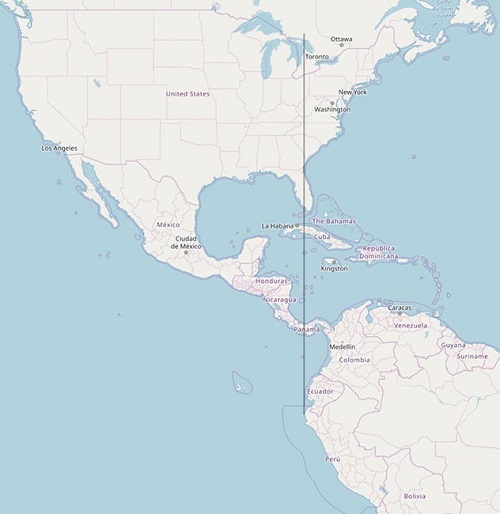
While this may sound more America-centric, it isn’t only a common misperception among Americans. Most of us, at least in our heads, place North America in the same longitudinal position as South America. It also makes sense because South America appears to be almost directly below North America on most maps we see, even if it isn’t.
The issue is that the Mercator Projection is not only wrong, but it also spreads outright falsehood as fact (Greenland is not nearly as large as Africa by a large margin). It’s a particularly Eurocentric projection of the Earth, as it vastly exaggerates the size of northern hemisphere countries in comparison to their southern equivalents. In actuality, the continents of the global south are far larger than we realize.
- The Third Route Around The World
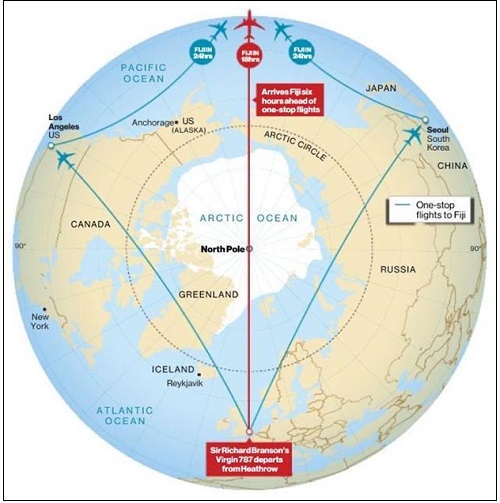
If you’re in the United States and want to fly to a country on the other side of the planet, you’ll most likely take one of two routes. Depending on where you are in the United States, it could be across the Atlantic or across the Pacific. Because the Pacific Ocean is so vast, the latter is generally always the lengthier option.
If we asked you if there is another, faster route to travel, you would undoubtedly say ‘no.’ After all, based on the map, those two appear to be the only alternatives, as no other plausible path could possibly be shorter than these two. Right?
The reason we believe this is because the map is in 2D, and our brains aren’t geared to transfer things from 3D to a plane intuitively. If you’ve ever been fortunate enough to experience it, you’ll know that there’s another path around the planet that may be even shorter than the two we’re familiar with: the one through the Arctic.
- Everything About Africa
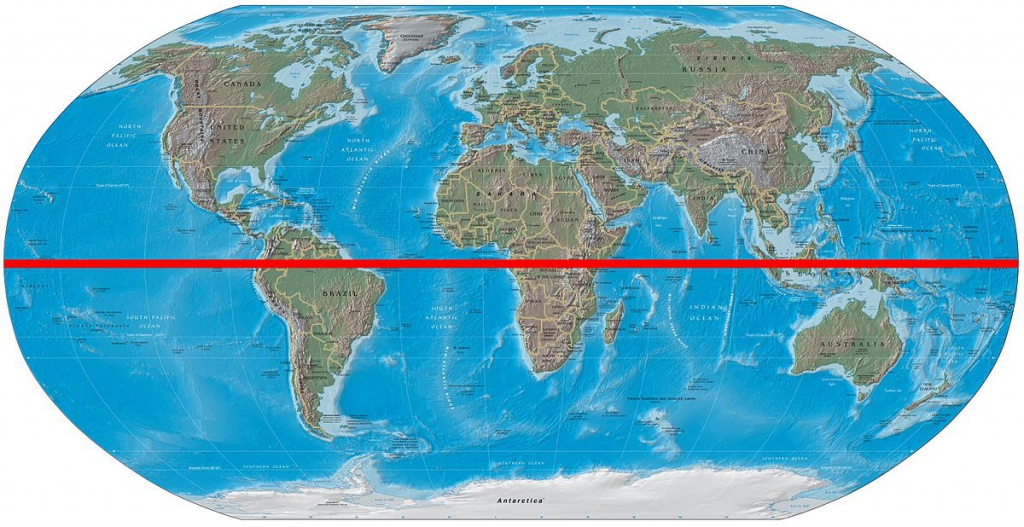
The Equator is commonly imagined as a neat border between the southern and northern continents. While this is mostly true for South America and Australia, with a few exceptions, it could not be further from the reality in the case of Africa.
When you look at the map, you’ll see that much of Africa isn’t in the southern hemisphere at all, since the equator divides it almost precisely into two halves. Because of the bulge on the western edge of the continent, the northern section is still somewhat larger.
But that’s far from the only way we misunderstand Africa; we also tend to grossly underestimate its size. Africa, on the other hand, is enormous. It’s larger than China, India, the United States, and nearly all of Europe put together.
- Arid, dry deserts cover just a small portion of Iran.
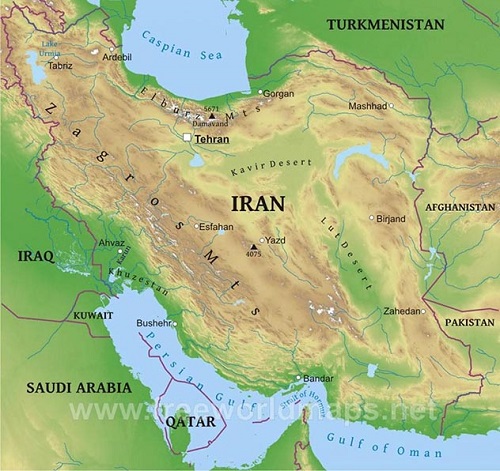
Take, for example, Iran, which is still viewed as a desert country in public imagination for some reason. When most of us think of this country, we envision endless views of sand dunes and camel safaris to faraway oasis, since that’s how it’s still depicted in popular western media.
We’re not denying that Iran has a desert but they’re not quite as large as we imagine. Deserts make up just roughly 22% of Iran’s total land area. To put that in perspective, the desert covers almost 28% of China, despite the fact that no one has ever referred to China as a desert country.
The rest of Iran is made up of a variety of terrain types, including rangelands, marshes, glaciers, and tropical beaches, to name a few. The background of daily life in Tehran, which may as well be one of the most picturesque cities in the world, is mountain peaks continuously covered with snow, something we don’t expect to see anywhere near Iran or the Middle East.
- Europe is much closer to the Arctic than the United States.
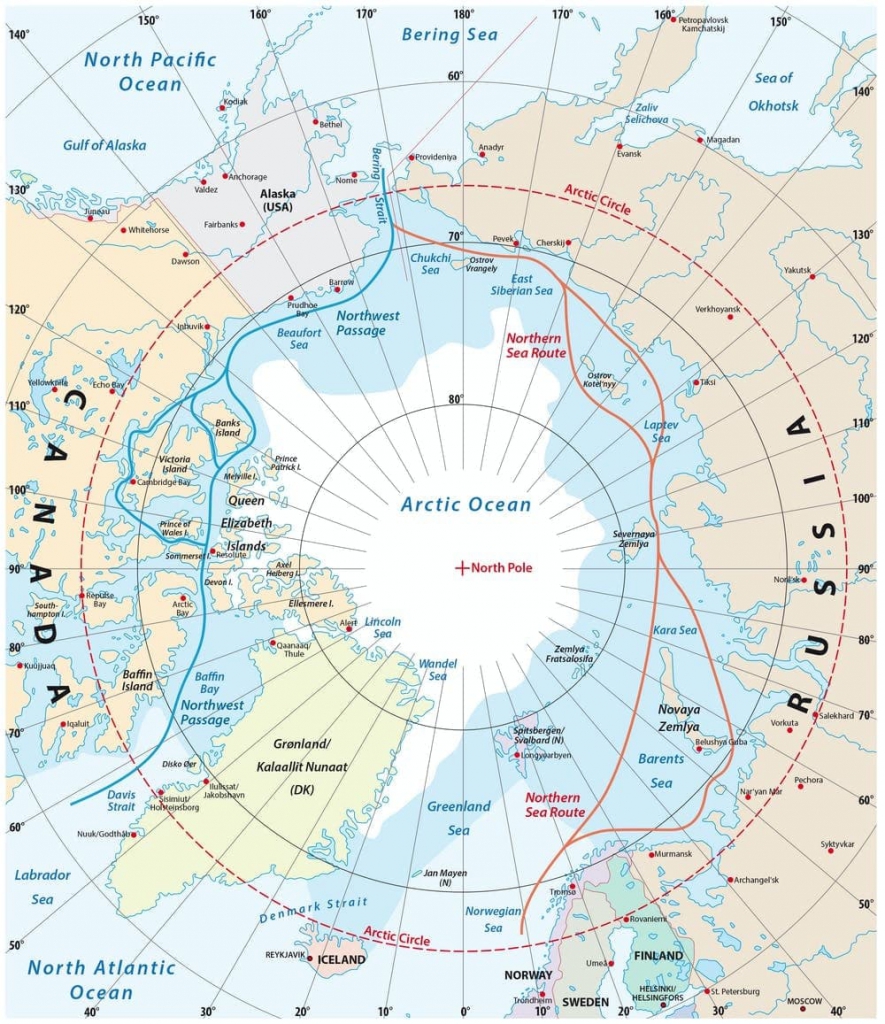

If you ask somebody if New York is closer to the Arctic than London, the response is almost certainly yes. It seems to reason that it is, too, given that its average winter temperature is roughly 10 degrees Celsius colder than London’s, which must be due to its closeness to the Arctic. It would be absurd to imagine that its European counterpart would be, say, Azerbaijan, a nation so far south that a portion of it is in Asia.
New York is practically on the same latitude as Azerbaijan, which is, as you may have guessed, rather far from London. The European (or, more precisely, African) analogue to Miami is located someplace in Egypt. If you fold the map horizontally, you’ll see that America’s northernmost point is close to Europe’s southernmost point.
The Mercator map, which distorts the scale of some regions of the world to make them appear larger than others, resulting in anomalies in the overall placements of the places, is most likely to blame for the misunderstanding.
- We have no idea how large the Pacific Ocean is.
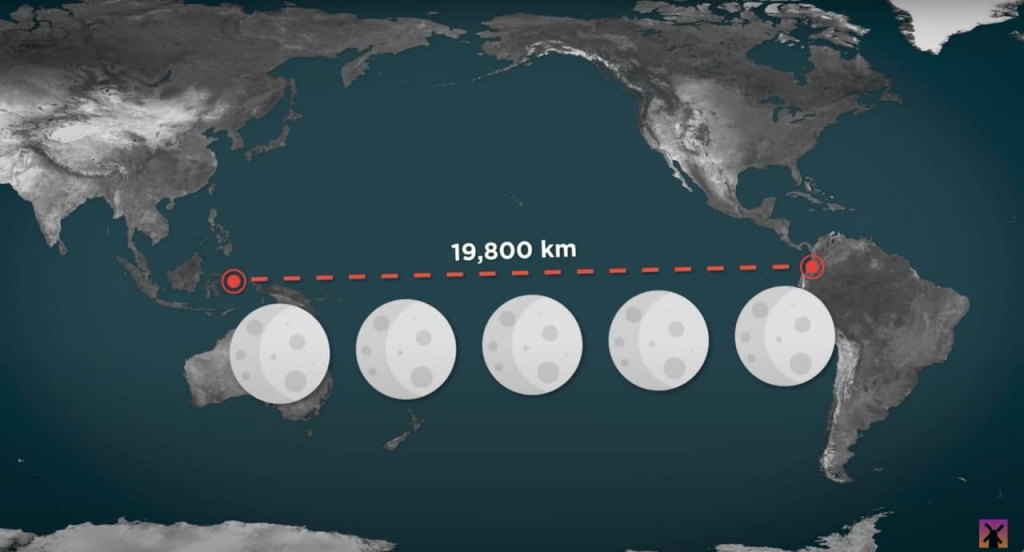
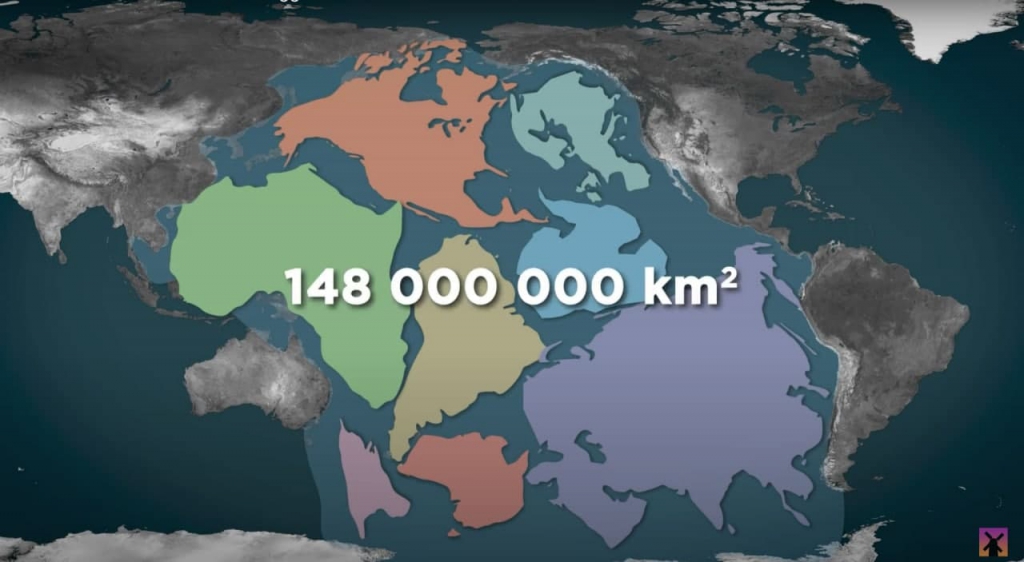
When cartographers initially began mapping the world, many of them took liberties with their calculations due to a variety of factors such as cultural preconceptions, a lack of better equipment, or just not being the best at their profession. Even though most of those misconceptions have been corrected, humans continue to overstate the size of the Earth’s landmass in comparison to its seas.
This disparity is particularly pronounced in the Pacific Ocean, which is maybe the world’s least studied ocean. Even while we know it’s the largest ocean on paper, we have no idea how vast it is in actuality. Consider this: the Pacific Ocean encompasses more than one-third of the Earth’s surface. Yes, the Pacific Ocean accounts for around 33 percent of the 70 percent of the Earth’s surface covered by water (all water, including freshwater).
The Pacific’s immensity isn’t simply for show; it causes genuine issues for us in terms of exploration and mapping. It’s so vast that we’re continuously discovering things we didn’t know existed there (they recently found a 3 million old volcano near Minamitorishima Island, Japan). It’s also the deepest ocean, with just four visits – not even explorations – to its deepest point. To put things in perspective, we’ve traveled to space over 500 times.
- Australia Is Almost Empty
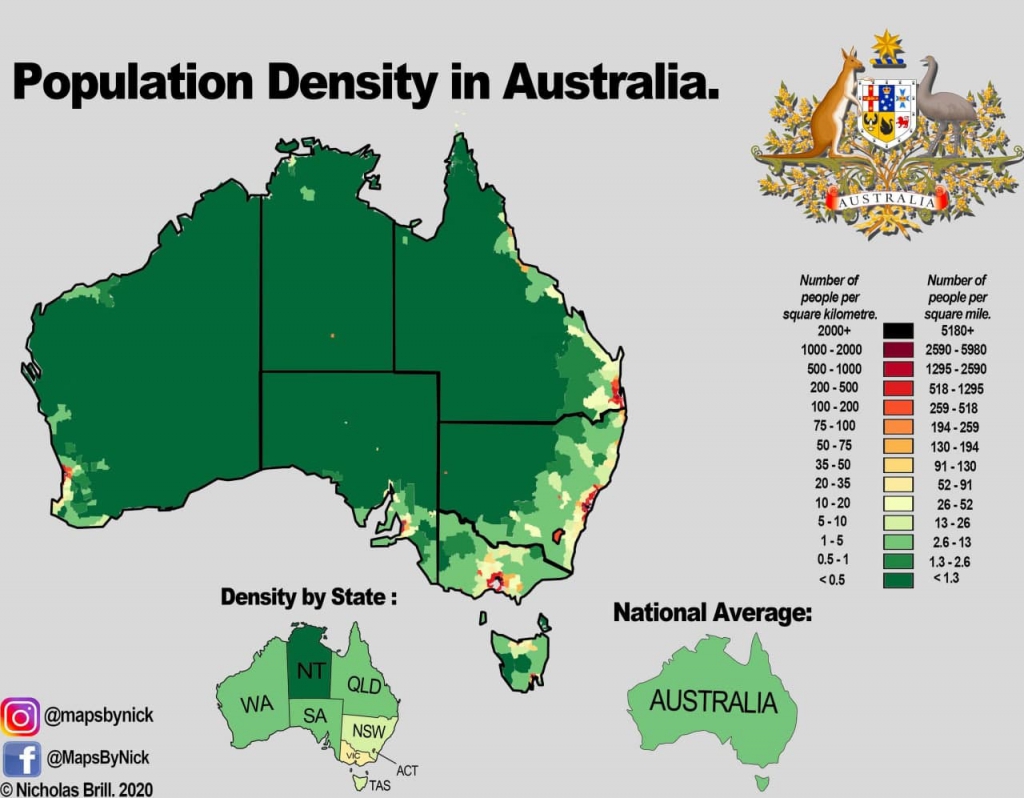

Australia is one of the five majority English-speaking nations (excluding autonomous overseas territories), and it is a highly rich country by all standards. What we don’t know is that it has accomplished all of this by being so sparsely inhabited that it may be likened to some of the world’s most desolate and hostile locations, such as Mongolia and Namibia. Despite being as industrialized and extensive as the contiguous United States (it is the sixth largest country in the world), Australia has a population density of 5 persons per square mile.
This is due to the fact that the entire population of Australia lives on the coastlines, while most of the country’s interior is hostile to human existence. The government recognizes that low population density is an issue, since there are still many areas of the nation that, with more targeted development efforts, may be transformed into vibrant towns and cities.
Now, if you are interested in world maps and you want to have a high quality and unique world map at home or at work, just look at Romadon products.
-
The History and Evolution of Metal Wall Art
 No CommentApr 24, 2024
No CommentApr 24, 2024 -
Bohemian Rhapsody, Fiction vs Reality: 13 Times the Movie Lied to Us.
 15Apr 22, 2022
15Apr 22, 2022 -
18 incredibly intriguing and astonishing facts about elephants.
 15Mar 17, 2022
15Mar 17, 2022 -
‘The Wall’ still standing tall; Pink Floyd’s revolutionary album turned forty years old.
 15Feb 26, 2022
15Feb 26, 2022 -
Christmas Tree | Legends And History
 13Jan 14, 2022
13Jan 14, 2022








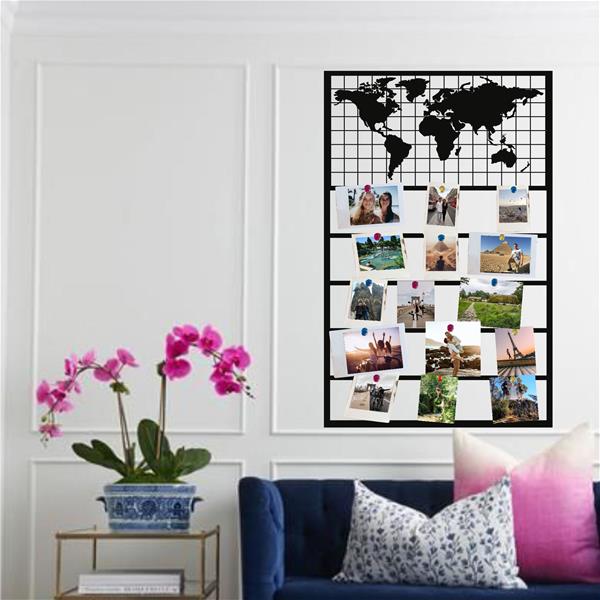


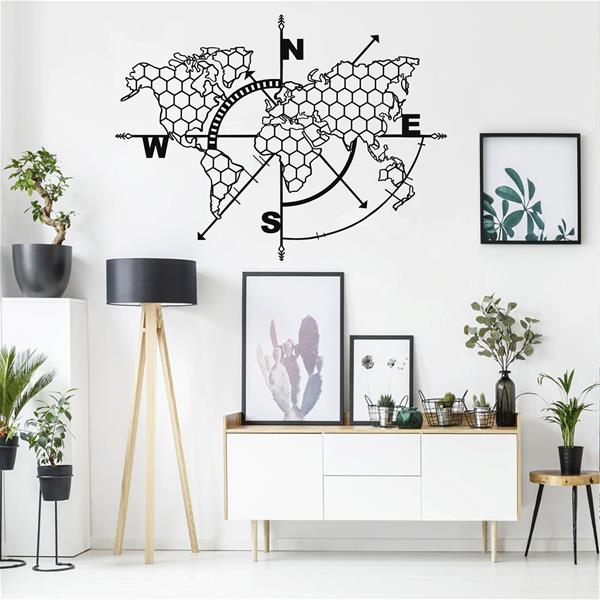

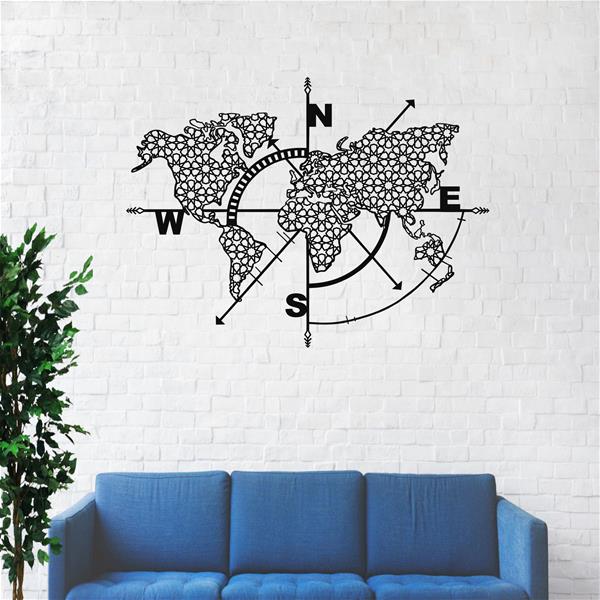

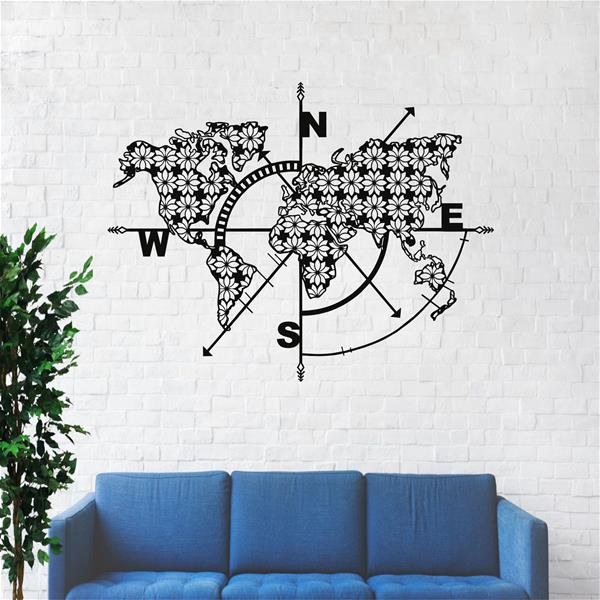






Wow, what a captivating journey through the world of maps! From ancient navigators to modern GPS systems, maps have guided humanity through the ages. Discover more about the art and science of cartography with books like ‘The Mapmakers’ by John Noble Wilford. Let’s keep exploring together!
Exploring the world through maps is like taking a thrilling adventure without leaving your seat! From ancient civilizations to modern technology, each map tells a unique story. Dive deeper into the world of cartography and uncover more fascinating facts with ‘The Map Book’ by Peter Barber. Happy mapping!
Such a captivating exploration of world maps! From ancient treasures to modern marvels, maps unveil the mysteries of our planet. Discover more about the art and science of cartography with books like ‘The Phantom Atlas’ by Edward Brooke-Hitching. Let’s keep mapping our world and imaginations!
What a fascinating journey through the world of maps! 🌍 Explore further with movies like ‘Longitude’ and ‘The Mapmaker’ to see how cartography shapes history and adventure. From ancient explorers to modern discoveries, maps continue to guide and inspire us. Happy exploring, on screen and off!
Absolutely fascinated by this exploration of world maps! Dive into the poetic side of cartography with works like ‘Map: Collected and Last Poems’ by Wisława Szymborska. Poetry adds another layer of depth to our understanding of the world. Happy reading and map-inspired pondering!
ssume you read an essay in romadon.co blog about : “‘world maps ”
write an informal and friendly and creative and short comment for me to add under the essay in romadon.co and with different structure of lasts comment you wrote here .
even u could introduce books about world maps
maximum 50 words
What an exciting exploration of world maps! This essay illuminates the beauty and significance of cartography. Dive deeper into the world of maps with books like ‘Map: Exploring the World’ by Phaidon for even more fascinating insights and discoveries. Happy reading and map exploring!
Exploring the world through maps is like embarking on a thrilling adventure! This essay vividly captures the beauty and wonder of cartography. From ancient maps to modern projections, each tells a unique story about our planet. Thanks for broadening our horizons and reminding us of the diverse tapestry of our world!
Such an eye-opening journey through the world of maps! 🗺️ This essay beautifully highlights the diversity and complexity of our planet. From ancient cartography to modern GPS, maps truly shape our understanding of the world. Thanks for this fascinating exploration!
Whoa, talk about seeing the world in a whole new way! 🌎 This blog blew my mind with its fascinating maps and insights. Did you catch the map that shows the world’s population density? It’s incredible how visuals like these can shift our perspective on global dynamics. Thanks for expanding our horizons and making geography so much more than just lines on a map!
These maps are seriously mind-bending! The one showing true land size is a real eye-opener. It’s amazing how much our perception of the world can be skewed by something as simple as a map projection. Great essay, thanks for sharing!
Mind officially blown! These maps are like a GPS for my imagination, taking me on a wild ride through geography and beyond. From quirky facts to eye-opening visuals, each map offers a fresh lens on our world. Who knew cartography could be this cool? Thanks for broadening my horizons and turning my world upside down… in the best possible way
Wow, talk about mind-blowing! These maps truly offer a fresh perspective on our world. It’s amazing how a simple shift in geography can completely change our understanding of global dynamics. Thanks for this eye-opening journey through cartography!